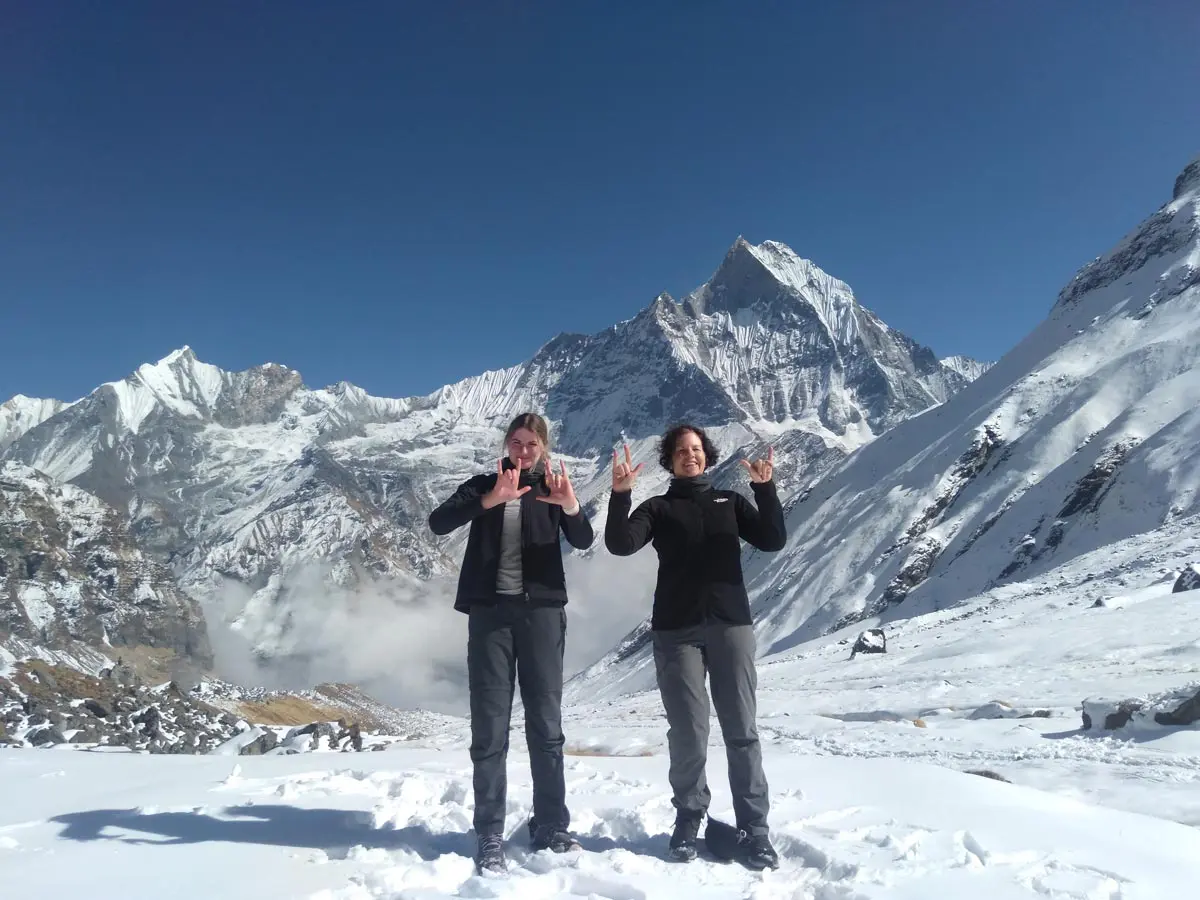
Annapurna Base Camp Trek (ABC Trek) A visit to the Annapurna Base Camp Trek (or the ABC Trek) is like stepping into the dreamland of nature and adventure. That classic trek that takes you down into the soul of the Annapurna Sanctuary and with all the phenomenal panorama, impressive cultural history, and Himalaya connection that you’ll never forget. But in case you need to make the most out of some time in the Annapurna Base Camp Trek, timing is vital.
Selecting when to hike can affect the climate, ordinary trail situations, and how cozy, safe, and fun the enjoy is. In this text, we inform you about the nice times for hiking, the best and terrible factors approximately every, and the key elements to remember when deciding on when to plan your Annapurna Base Camp Hike.
Read about the Annapurna Region Climate
The Annapurna ASC (Annapurna Sanctuary Trek) Ecology The Annapurna has as many microclimates as it’s possible to have, and certainly at different Aprils and different Novembers, some years hot and those wind-filtered winter treks freezing. Geography climate. There are 4 seasons: spring, summer season (monsoon), autumn, and winter. Hiking opportunities vary by way of season.
Understanding these seasons will prepare you further in deciding when the best time to trek is, according to what weather you’d like, crowd levels, among what each season offers in terms of trekking.
Spring for the ABC Trek. Spring is the best season.
March – May The spring season is one of the best seasons for the Annapurna Base Camp Trek. The weather is warming up as winter continues to fade, and with that, the trails are more available and more fun. Cooler climes are available just a degree or two north, in the lower elevations, but with far less likelihood of substantial snow.
One of the highlights of trekking in spring is seeing the rhododendron-decorated hillsides in full bloom. And this is what makes Annapurna Sanctuary Trek even more beautiful, and you are here reading about it because it’s so photogenic. And the visibility is usually excellent, so trekkers will get some of the best panoramic views of Annapurna South, Machapuchhare, and other stunning peaks.
Tea houses and lodges open during spring to serve you, providing you with the best teahouses and best meals in lodges. But it’s also proved a double-edged sword: Because spring is so bonkers, the trails can get just as crowded with other trekkers, with some trekkers unable to get that same sense of solitude they’re seeking.
Autumn: Ideal weather, no clouds
Autumn (Late September – November) Another great time for the Annapurna Base Camp Trek. At this time of year, it is a favorite due to the consistent weather and clear nights here. The monsoon rains wash the dust and pollution from the air, leaving it fresh and clear and perfect for the best viewing of the majestic mountain vistas that some say can be had all year.
It’s fair temperate during the day, but it can get downright nippy at night when you begin to ascend. Dry trail- good after come monsoon, so nothing to worry about or mud or slides.
Autumn is also less crowded than spring and is ideal if you’d rather avoid the crowds of high trekking season. The local village festivals, these are Dashain and Tihar, are truly improved cultural experiences of the ABC trek and offer a glimpse of traditional village life and hospitality.
Summer (Monsoon): Challenges and Benefits
It is summer time, June- August is also considered as monsoon season in Nepal. This period is characterised by occasional monsoon storms particularly at the lower altitudes and at the higher altitudes, treks are not an option as routes can get very muddy making the trails the kind that creates long slides down the mountainside, and may be dangerous in some places, so do make you sure ya think before when is good for ya. The hard on the feet muddy terrain is less difficult in the monsoon, hence, the Annapurna Base Camp Hike does have quite a monsoon season.
But that’s not to say you can’t trek in summer – there are some advantages. The landscape is opulent and inexperienced, the rivers and waterfalls are full, and the whole thing right here is alive. The trails are also lots less crowded, offering a more solitary experience for the adventurous few.
In case you need to hike inside the monsoon, then make sure you take rain gear, waterproof shoes, and some flexibility in your time table for the trails closing or being behind schedule. And make sure to seek advice from the modern-day nearby steering and advisories before traveling.
Hiking in Winter
Hiking in wintry weather isn’t always for everybody; the most effective individuals who can tolerate extreme cold and have the right equipment are the ones who should be doing it. Decrease elevations are nevertheless simpler to get admission to; but, snow drifts may additionally block the path, especially at higher passes and sections alongside the path itself.
Factors to Take into Account for Your Trekking Season
Annapurna Base Camp Trek comparison: Weather and crowds are both big considerations when planning your Annapurna Base Camp Trek, but there are a few other things to consider. Immersion is never cool,l peri, not even in the off-season, so go up slowly. Booking teahouses or guides in advance, particularly throughout high trekking times, including spring and autumn, is a good way to ensure you’ve got a bed and someone to guide you along the trek.
Consider how much cold and rain, noise, and tedium you’re inclined to put up with. In case you prefer my own time and don’t have an aversion to rain, you may revel in monsoon trekking. In case you’re after good weather and landscapes in bloom, spring or autumn is your quality bet.
Wrap Up: While you should schedule your Annapurna Base Camp Trek for maximum amusement?
You could trek to Annapurna Base Camp at any time of 12 months. Every season has something precise to provide, and depending on your possibilities and necessities, the ‘first-rate time’ for you and your organization varies. Spring and Autumn are the two most popular and convenient seasons due to the weather conditions, which are clear and not foggy, and everything is green. It’s a strenuous hike but a stunning one if you are looking for isolation and brilliant flowers within the summer season; a greater tranquil snowshoe trail in case you are prepared for a bit of effort within the winter.
Understanding the climate and temperatures will let you choose the pleasant time of 12 months to your trekking in Nepal, and you may be able to see a number of the beautiful views and splendor that Annapurna Sanctuary has to offer. With thoughtful preparation and lots of company—regardless of the season you select—hiking can be one of the most a laugh and interesting experiences you could have.


